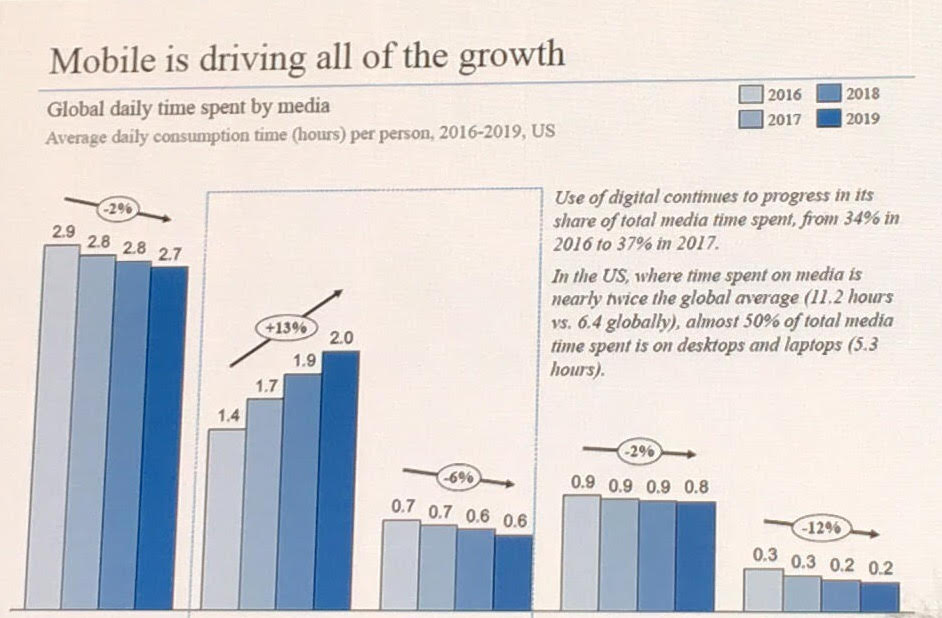Just two words can sum up the top lessons from the gathering of world publishers in Berlin this week: artificial intelligence. Or to be even more specific, robot journalists. It seemed every speaker at the very least touched on this theme, if they did not devote their entire talk to discussing AI from a different perspective.
Michael Hirschbrich first touched on this theme at the Startup Stage, where he discussed how AI is disrupting the media industry. He astutely remarked,
Media companies must start to define themselves as technology companies.
Michael Hirschbrich

Michael Golden, President of the New York Times, outlined the strategic approach they have taken. He elaborated on their business model which focuses on meeting the needs of their audience on all platforms and highlighted their success in accelerating subscription growth, beyond the ‘Trump bump‘ seen by other American newspapers. Not surprisingly, this growth is driven all by mobile.
We then looked at how readers feel about media produced by robot journalists. Professor Neil Thurman highlighted a study that found there is not a large gap between how readers feel about human written stories and automatically generated stories. And interestingly, in Korea, where trust in journalists is low, being told that a story was generated automatically made readers more likely to enjoy a story. For robot journalists to succeed, there must be a large data source, with Steven Morell stating:
Computer written text today is indistinguishable from human written text, as long as it is based on data.
Steven Morell
This need for data for text automation is one reason Professor Thurman sees the main application of AI technology in the next 5-10 years being video and visuals automation. Thus, this technology will be used in collaboration with human journalists, to allow them to speed up the process of visual creation which is becoming more and more important with the visual demands of social media.
Continuing this theme of the importance of technology and AI for media companies, industry expert Steffen Damborg spoke about how publishers can engage their readers. We were proud to see that he highlighted Twipe’s research on this topic, which ultimately led to the creation of our EngageReaders technology. It was a good opportunity to reaffirm that industry experts view Twipe as an innovative digital partner.

The final day saw a discussion on preparing for the 2020s, with experts in technology and media. Sebastien Provencher, the Director at Element AI, gave an enlightening talk on how AI can be used in media companies, and the limitations of the technology today. He stated that while “Breakthroughs in the last decades have enabled AI to match or exceed human capabilities in many years” it is still “not magic”, and so media companies need to understand how AI can be best utilised. As for why AI is such a buzzword today, he explained that it all goes back to data, just as Neil Thurman and Steven Morell stated earlier. In recent years, more and more companies have begun to compile the large data sets that AI needs to function, which combined with the increase in computing power today, has led to an increase in the applications of AI technology.
Going forward in this data and technology driven world, we can only see an increase in the uses and importance of artificial intelligence for media companies.
This article was written by Mary-Katharine Phillips, Media Innovation Analyst at Twipe from 2017 – 2021.
